The thing I love most about summer is that here in England, it gives us 6 extra hours of daylight compared to winter. That means things stay open later and instead of rushing home from a day of work in London, sometimes it’s nice to linger and take advantage of many of London’s lesser known attractions. I took full advantage of this last summer, and am going to catch you up on some of my favourite visits.
One such amazing place is Lincoln’s Inn, one of London’s four Inns of Court, to which the barristers in England and Wales belong. I decided to visit for a tour to see the incredible buildings and learn more about this rich part of England’s history. It’s a really cool thing to do whilst in the city, so if you’re looking for something a bit different and off the beaten track, this one’s for you.
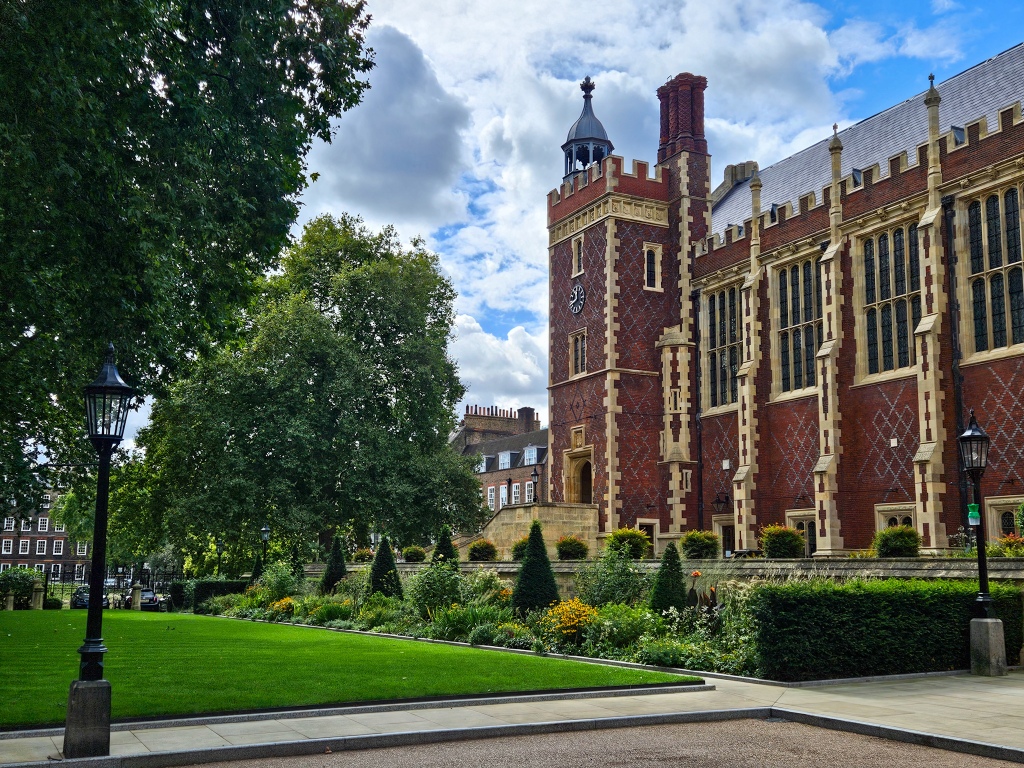
History of Lincoln’s Inn
London has four Inns of Court, all professional institutions for Barristers. The name ‘inn’ comes from being somewhere where the Barristers could find accommodation, and even today the Inns offer accommodation to members. In actuality, once you pass through the Inn’s gates it’s like being in a little village, with a central green, lots of office buildings, a chapel, residential buildings and large communal areas.
Lincoln’s Inn itself dates back to at least 1422, over 600 years ago. The records of every meeting, and every going on at the Inn have been recorded since that date in ‘Black Books’ so there is a thorough and detailed history recorded.
The Inn was founded on the site of the Bishop of Chichester’s ancient Palace. At the time, there would have been Bishop’s palaces all over London, but today only one remains in tact (Lambeth Palace). Likely the Palace was vacated and leased out to the lawyers.
Where the name Lincoln comes from is a bit of a mystery, but most likely it’s derived from the Earl of Lincoln who at the time lived nearby and often invited Barristers to his London Town House.

What to see on a tour of Lincoln’s Inn
The Chapel & Undercroft
The tour of Lincoln’s Inn starts in the Undercroft, the beautiful archways below the chapel. The Undercroft is home to a number of gravestones, and is recorded regularly in the ‘Black Books’. In the 1700s, it was used as a place by women to leave their newborn babies to be looked after – they were known as the ‘Foundling Babies’ and nearby the Inn you will find the Foundling Museum, telling the story of these children as it was once Britain’s first home for children at risk of abandonment


Above the Undercroft is a beautiful Chapel. Interestingly, the stained glass in the chapel represents treasurers and barristers coats of arms. I spotted one which was a Labrador on a surfboard and decided that was my favourite coats of arms ever!
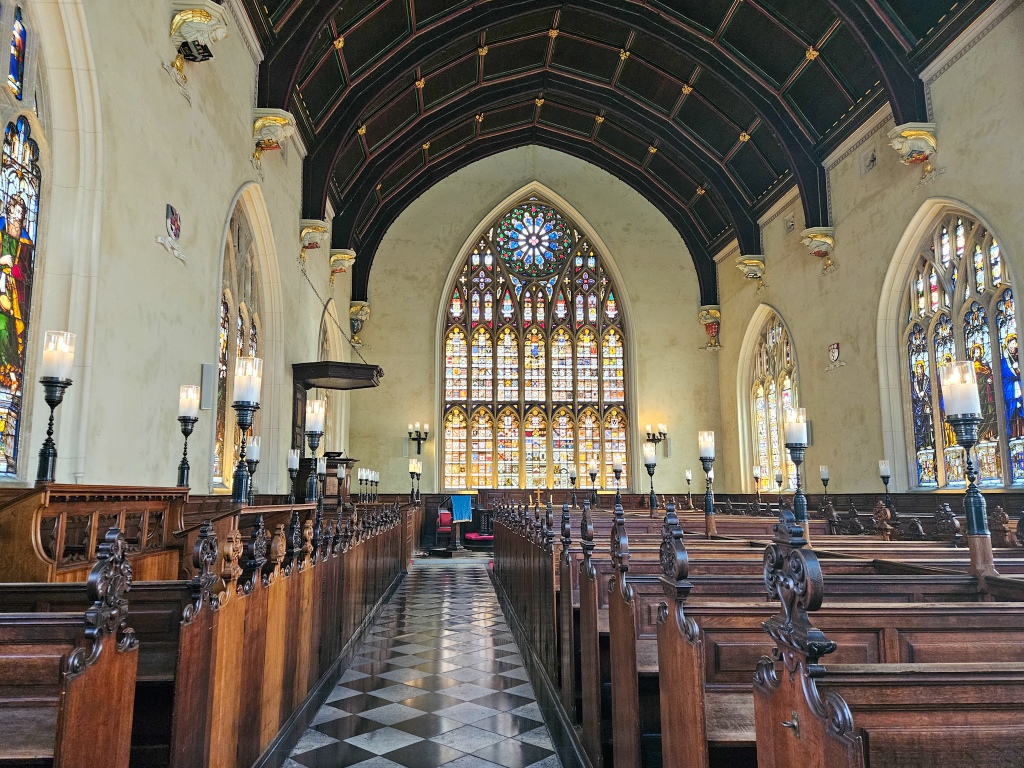
The Old Hall
After visiting the Chapel, it was time to enter the Old Hall. This was once the Inn’s dining hall, and the roof has a large vent in the centre to let out smoke. The Hall was also used for Members’ training – where they would act out mock trials for training.
The Old Hall is also famous for the ‘notorious dinner’, when in 1672 King Charles II dined in the Hall. Records of that dinner show that it was a lively and very drunken occasion (the guest book is signed with lots of wobbly signatures and wine stains). The diners were apparently so drunk that they were unable to stand to say the toast to the Monarchy and the King gave special permission for them to remain sitting. The tradition of sitting for the toast to the Monarch continues at the Inn to this day.
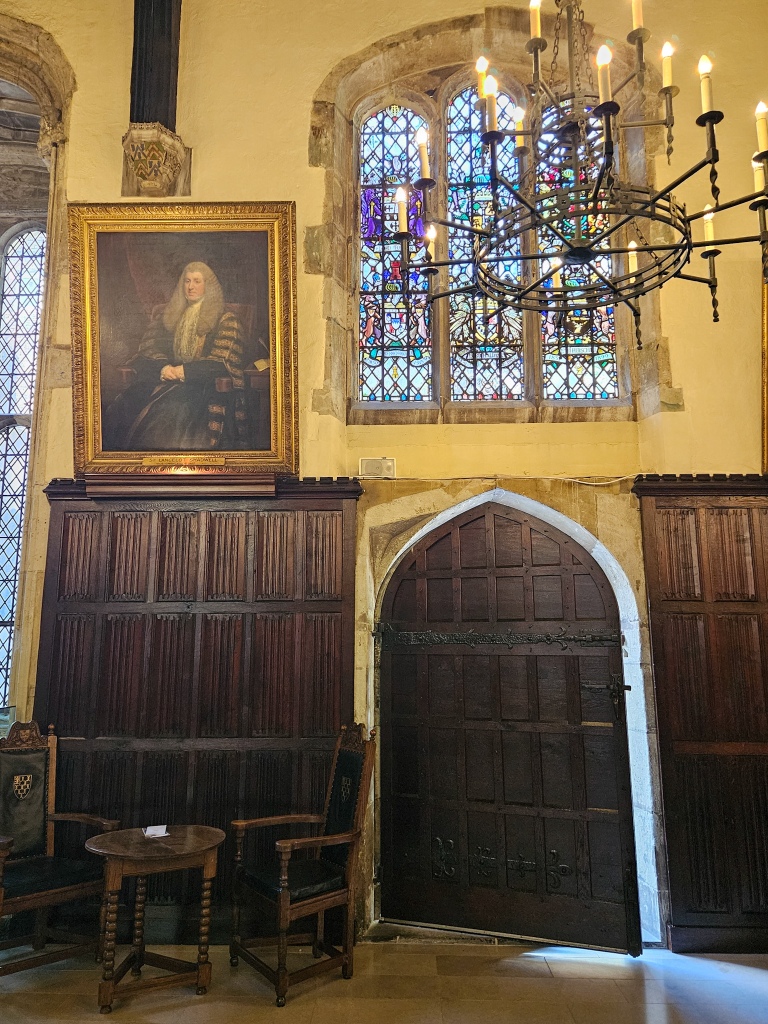
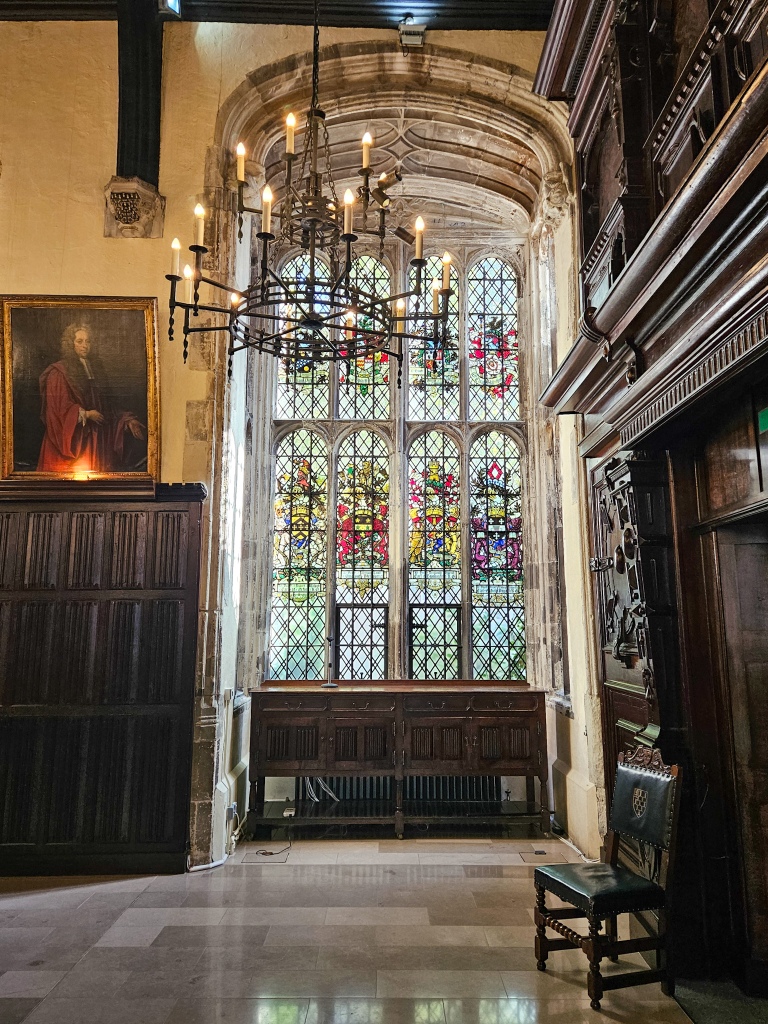

The Library
My favourite spot, the Library was really beautiful and I had it all to myself. The statue in the middle is of Lord Eskine (1750-1823), who is one of the Inn’s most famous former Members of the Inn, and an upholder of the rights of free speech and opinion. There is also a bust in the Library of Cornelia Sorabji (1866-1954), the first woman to study law at Oxford.
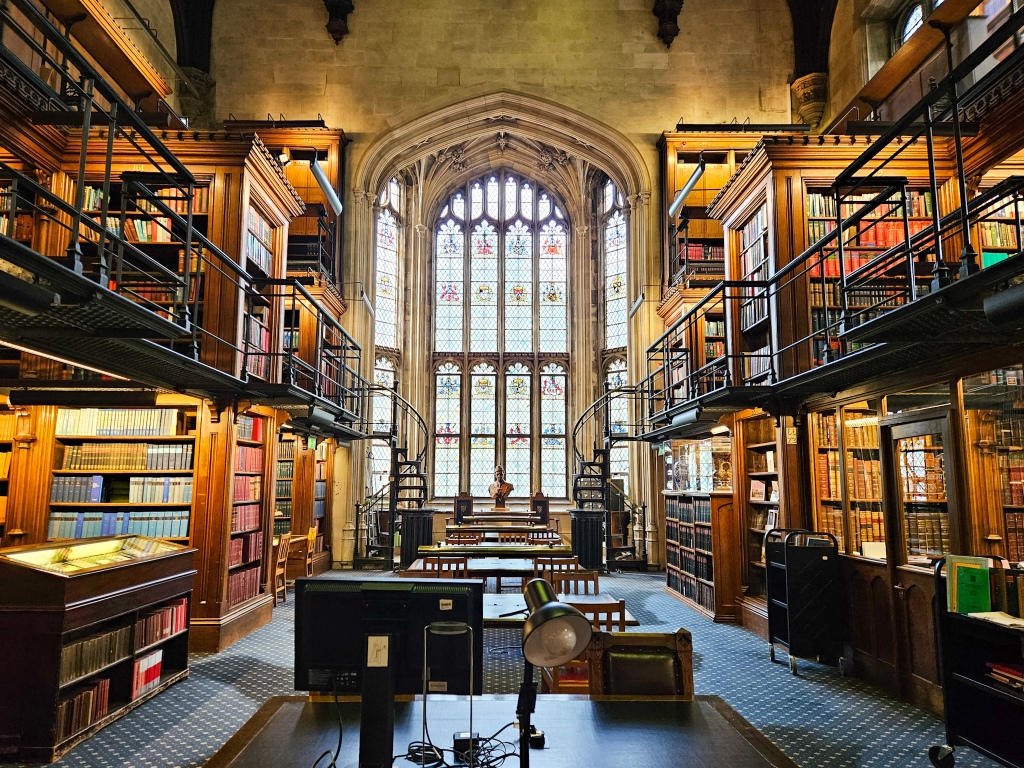

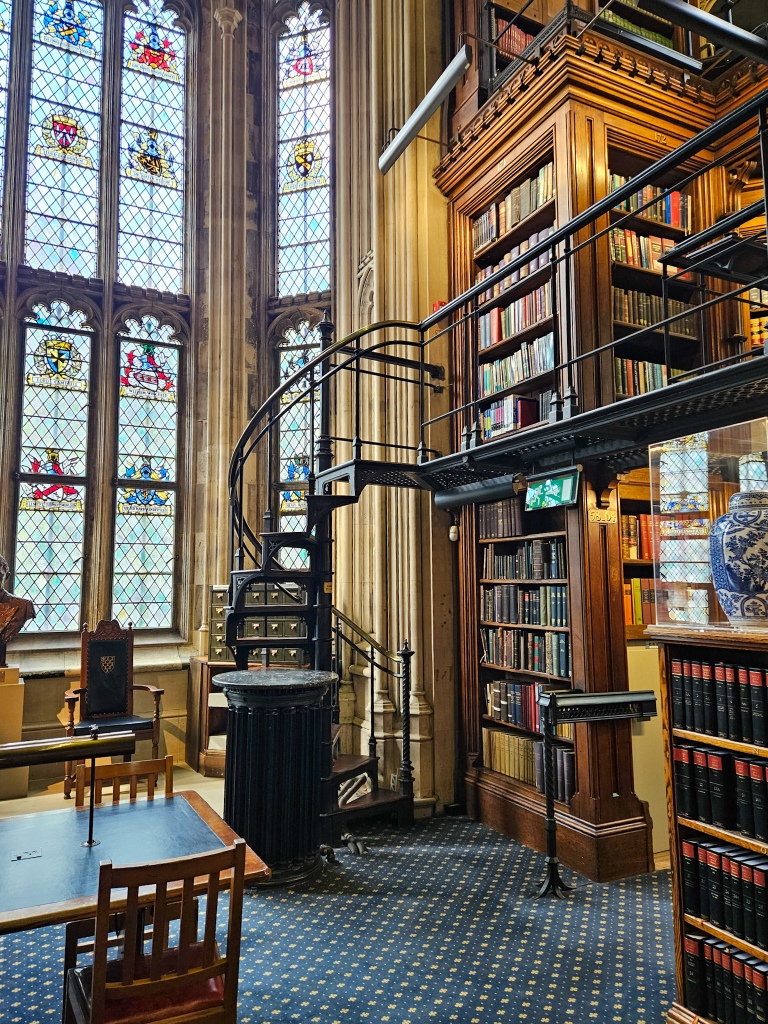
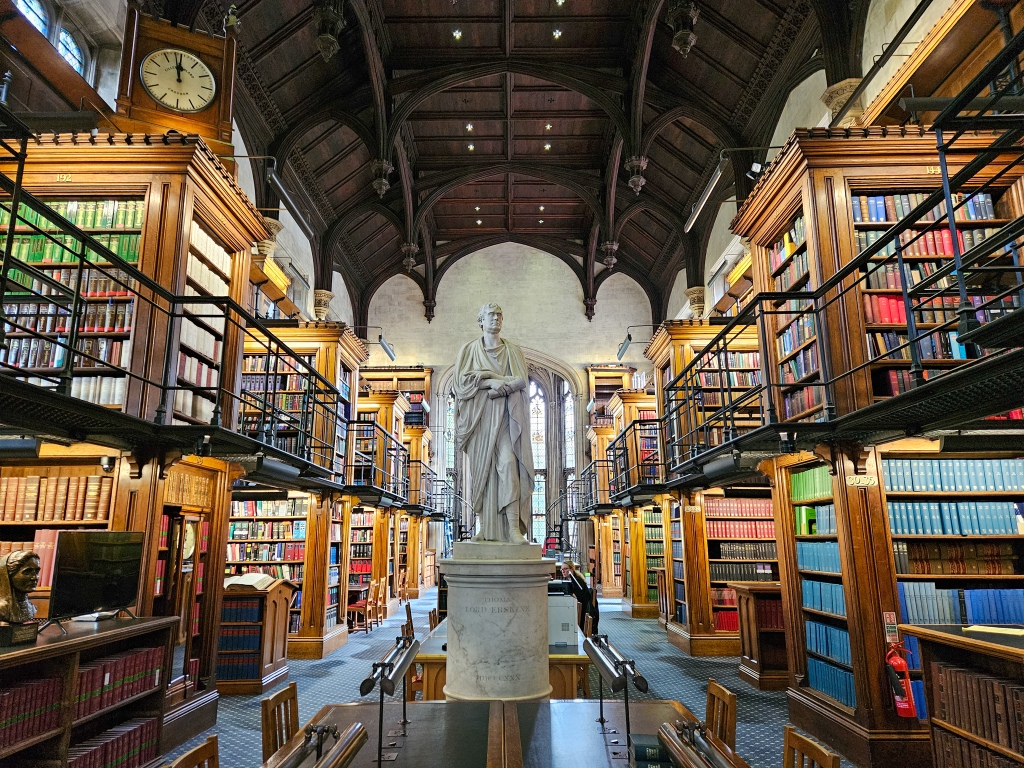
Function Rooms
Between the Library and the Great Hall are a number of function rooms that are used by Members for drinks receptions, small dinners and socialising. The rooms can also be hired and used for corporate events, weddings etc. They’re pretty beautiful!
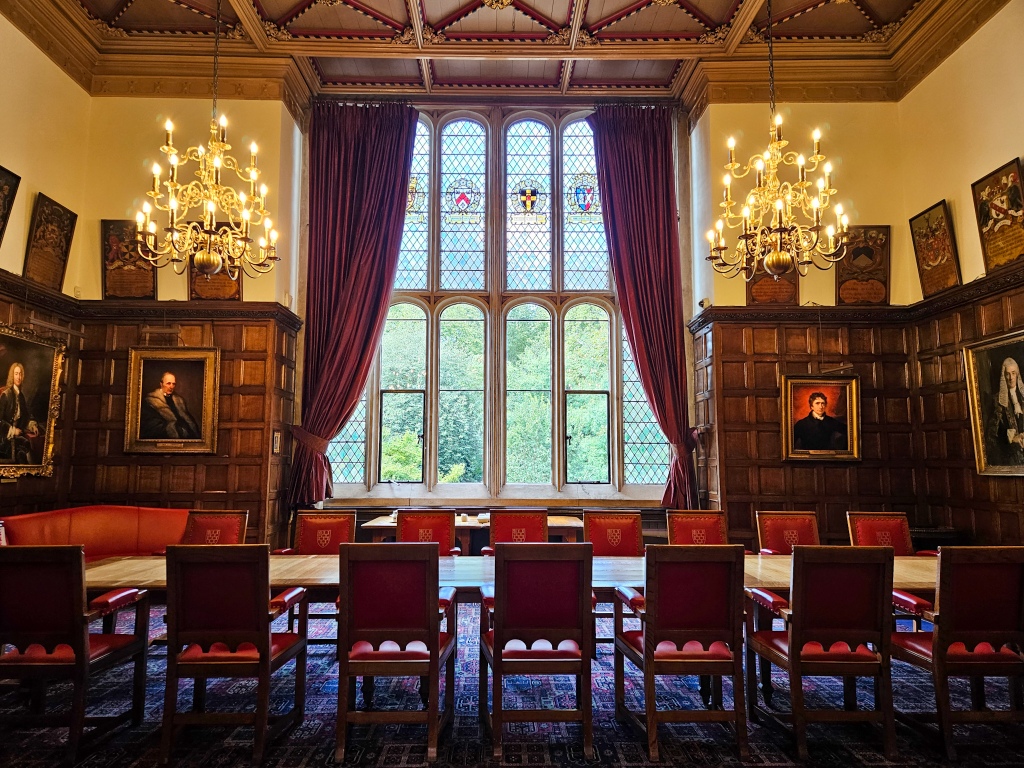
The Great Hall
The Great Hall is the centrepiece of the Inn’s social life, hosting lunches, dinners, events and everything in between. The superstar of the room is a huge Fresco painting by George Frederic Watts called ‘A Hemicycle of Lawgivers’. It’s meant to depict the law in the broadest sense, though Attila the Hun is in there so I’m not 100% sure what he represents!!
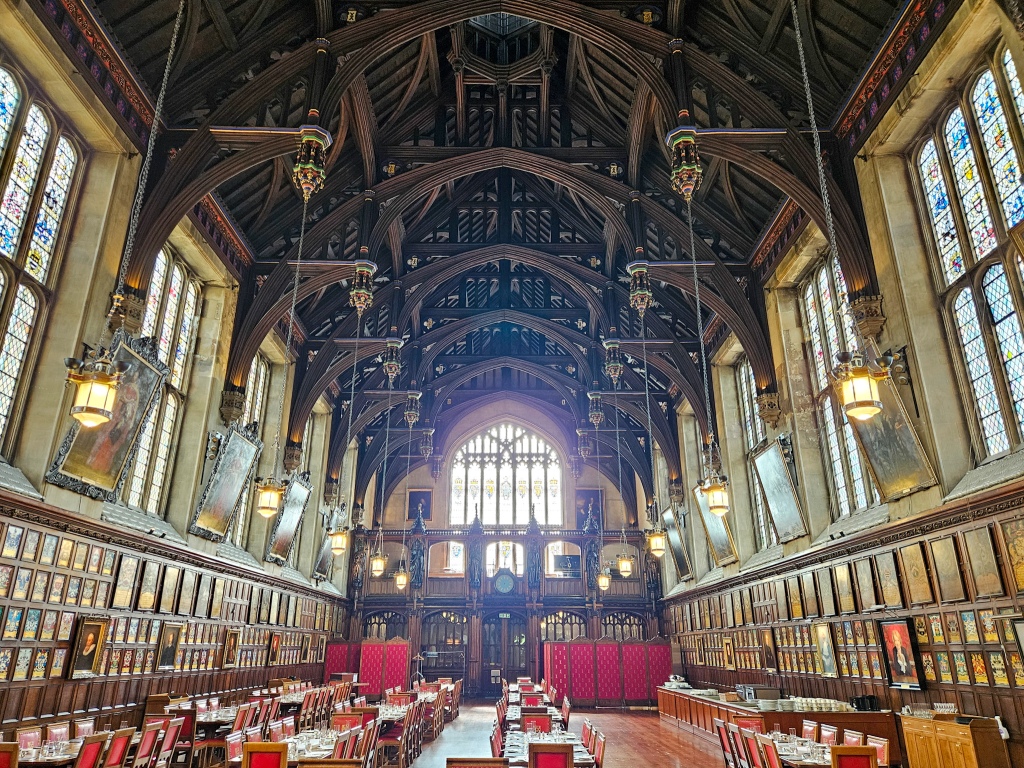

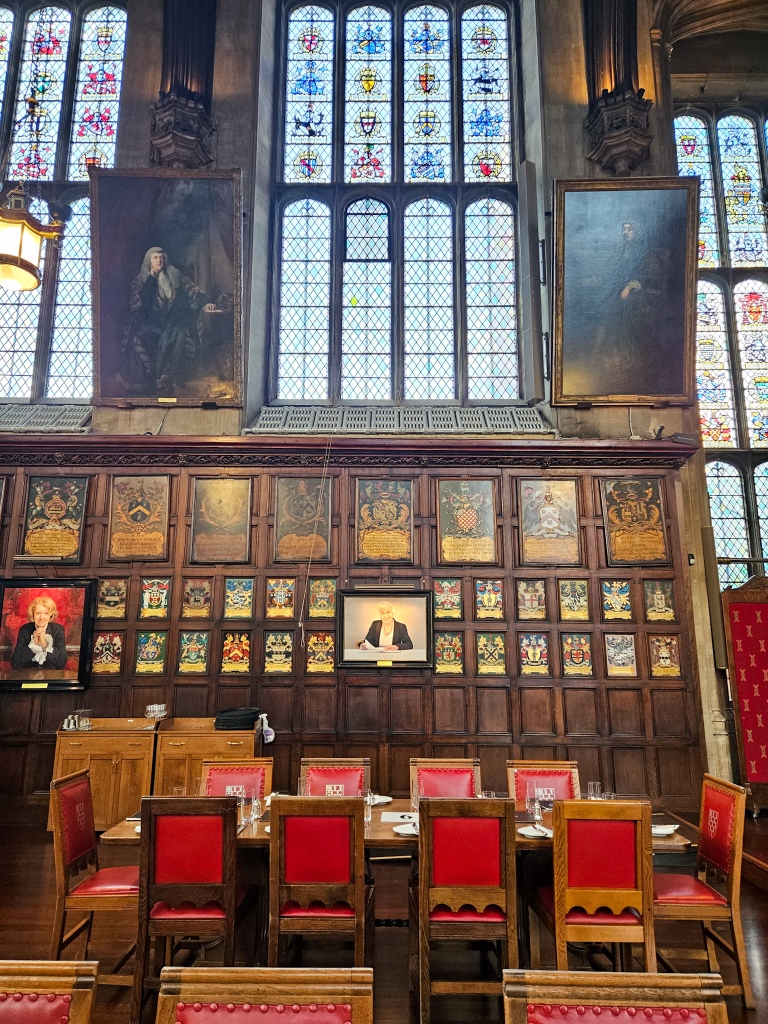
Useful Information about Lincoln’s Inn tours
- The Inn’s main entrance is located on Newman’s Row, on the south side of Lincoln Inn’s Fields. From the gatehouse you can get directions to the Undercroft, where tours of the Inn start.
- Tours run once a week (times and days vary), and cost £15 per person
- The Inn also offers self guided tours for £7.50. It does not provide access to all the places on the guided tour, but you can see the Library and Great Hall complex, in addition to the Chapel and Gardens.
- The nearest tube stations to access Lincoln’s Inn are Holborn and Chancery Lane, and the Inn is walkable within 30 minutes from major London train stations Kings Cross, St Pancras and Euston.


And there you have it – a wonderful tour of an incredible set of buildings. What did you think of Lincoln’s Inn and would you enjoy a visit? Thanks so much for stopping by – stay safe and happy travelling.

Leave a comment